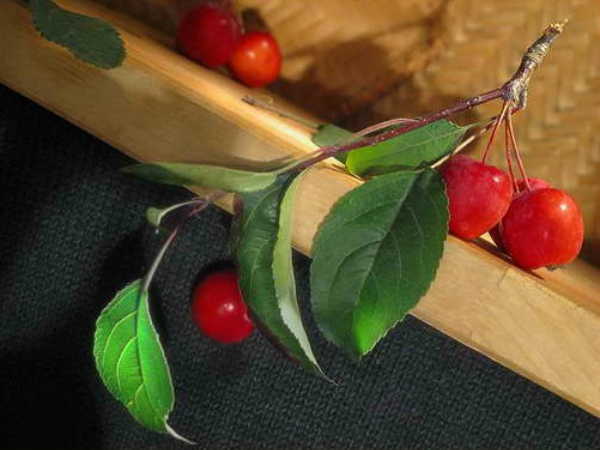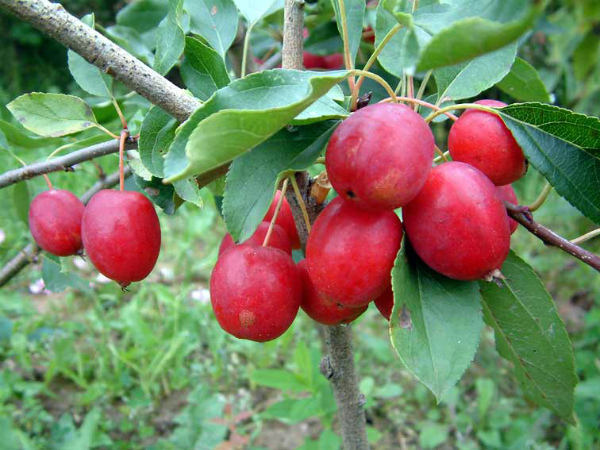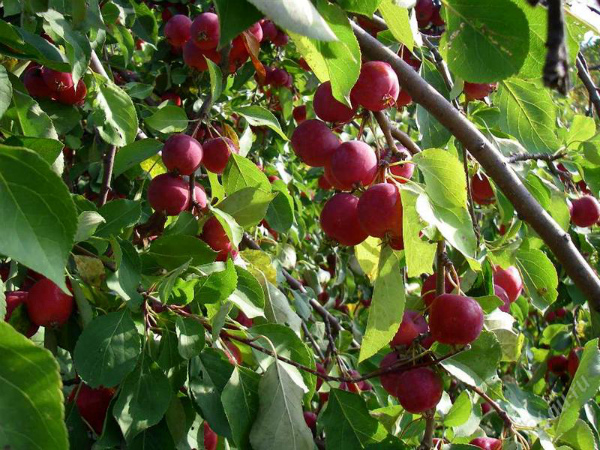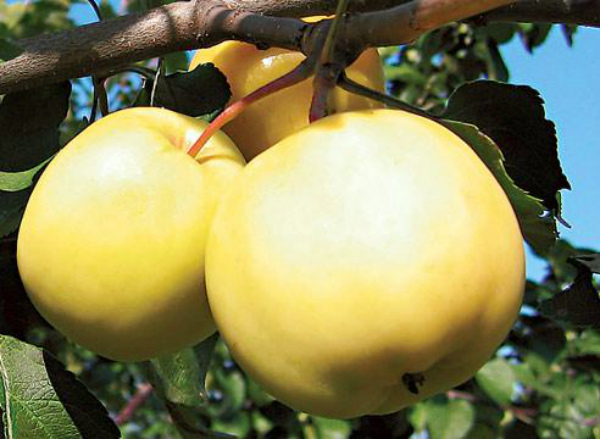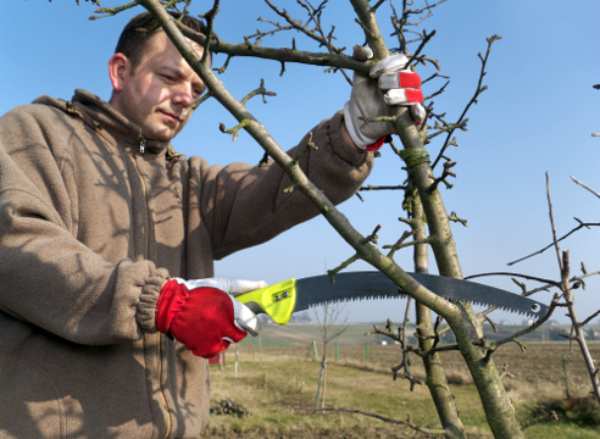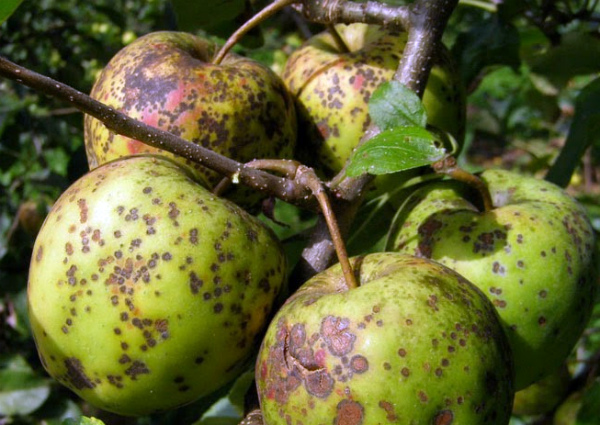Features and characteristics of the Ranetka apple variety
Content
General information
"Ranetka" is a common name for several small-fruited apple trees that appeared when crossing the Siberian berry apple and European varieties, as well as the Siberian berry and slate apple, also called "Chinese". The result is trees with high winter hardiness, increased productivity and good resistance to sunburn.
The apple variety has received a large number of characteristics from the Siberian berry (“Siberian”). Trees adapt to most climatic conditions, while there are certain types of "ranetki", which are zoned for the Urals, Altai and the Far East.
Description and characteristics
As noted above, "Ranetka" is not one apple variety, but a collective name for several hybrids. The following is a description of the most popular species that have won the love of gardeners in all parts of the country.
One of the first ones worth noting is the Dobrynya variety, which received high winter hardiness and vigorous growth from the Siberian. The trees are good scab tolerant, moderate drought tolerance. The early maturity is average, the first harvest can be obtained as early as 4 years of growing a tree in the garden, removing up to 50 kilograms of apples from one tree. However, the harvest is cyclical - every 3-4 years it decreases slightly. On the branches, fruits weighing up to 14 grams are formed, one-dimensional, flattened, with a pronounced ribbing. The peel is dark purple in color with a slightly waxy bloom. The pulp is slightly greenish, dense, juicy, with a pronounced sweet and sour taste and tinges of astringency. Fruits ripen by the beginning of September, and the marketable quality of apples can be preserved until mid-February.
The apple variety "Dolgo" is distinguished by its average height of trees and rather good resistance to low temperatures. The trees enter the fruiting phase at 4-5 years of growth in the garden. They usually bear fruit at an average level - up to 25 kilograms of apples from each tree. Like almost all Siberian hybrids, the Dolgo variety is resistant to scab. The fruits are relatively large, weighing up to 13 grams, oval in shape, with a rich purple peel and a slightly waxy bloom. The flesh of apples is white, permeated with many red veins, juicy, with a persistent and strong aroma, sweet and sour taste. Apples ripen by the beginning of September, but their marketable quality can be preserved for a maximum of 2 months.
“Ranetka Krasnaya” is another apple variety with small apples weighing up to 9 grams. Apples have an even purple color, cream-colored flesh, very juicy and sour, with distinct tart notes. The apple tree has good winter hardiness and growth duration. The harvest "Red" ripens in early September. The fruits are often used for making juices and purees. However, even this variety cannot be kept for more than 2 months.
Variety "Ranetka Zolotaya" refers to the columnar apple trees that bear fruit in the second year of growth in your garden. The trees are medium-sized, bear small yellow fruits with a blush on the side facing the sun.However, over time, they completely turn yellow, fully justifying the name, which received the variety "Gold". The pulp of the fruit is white, with a slight yellowish tinge, juicy and sweet, with a subtle astringency. Apples ripen by the beginning of September, and the harvest is relatively stable from year to year.
The variety "Raspberry" also deserves a detailed description, since it is characterized by high winter hardiness and early maturity - the first crop can be harvested two years after planting. It is characterized by steady fruiting, although apples grow up to 6 grams in weight. In the ripening phase, the fruits are round, slightly conical in shape with a dark raspberry peel and a bluish bloom. The pulp is juicy, slightly pinkish, sweet and sour. Apples are good keeping quality. They ripen in early September, and after harvesting they can be stored for up to 6 months.
The Yantarnaya variety, better known as Yantarka Altayskaya, is distinguished not only by its high winter hardiness, but also by its longevity. The trees grow tall, bear fruit already in the 4th year of growth in the garden, which is most important - they are distinguished by stable and high fruiting. Fruits ripen, weighing up to 10 grams, spherical, ribbed with a light yellow skin. The flesh of the apples is yellow, very juicy, but the taste is sour with hints of astringency.
Often "ranetki" are distinguished by a dense, pyramidal crown, strong trees. But at the same time, they are extremely susceptible to scab and moniliosis, they regularly become a haven for apple moths. Gardeners love these apple trees for their decorative appearance, and their fruits for their high content of nutrients, which is several times higher than the chemical composition of ordinary apples.
Video "Paradise Apple Trees"
Take a look at the overview of paradise apple trees in the Lopatinsky Garden nursery, grafted both on different rootstocks and seedlings.
Planting and leaving
The description of the planting site for "ranetki" apple trees is not much different from the choice of a site for planting any apple tree. It is desirable that the groundwater does not lie too close to the surface of the earth, the site itself is well lit and not too windy.
Pits for planting are dug up to 90 centimeters deep, the width varies from the size of the roots. There should be at least 70 centimeters of distance between the apple trees, and the row spacing should be 1-1.5 meters. The bottom of the pit is filled with a mixture of humus, soil, ammonium nitrate, potassium and superphosphate. Before planting, the roots of the seedling are carefully straightened, the earth around it is carefully tamped, and then the hole is well watered.
Every spring, it is necessary to treat apple trees with fungicides and insecticides of complex action in order to protect against the development of diseases. Of course, most varieties are resistant to scab or powdery mildew, but prevention strengthens the immunity of trees and helps to preserve the crop at the proper level.
Carefully read the description of preparations for treating trees before use!
Check tree branches annually and carefully and remove old, dead or frozen ones to help the tree grow better and faster.
Disease and pest control
Despite the fact that "ranetki" are quite resistant to fungal diseases and attacks of most pests, their description does not hurt. After all, he who is forewarned is armed.
First of all, the apple moth should be noted. These are small butterflies with a wingspan of 2 centimeters. Butterfly caterpillars overwinter in the bark of branches and fallen leaves. After it gets warm outside, they get out of hiding places and begin to actively eat the buds and young leaves of apple trees. Over time, the caterpillars braid the leaves and separate areas of the bark with cobwebs, in which they later pupate. A new generation of moths emerge from the pupae, which continues to eat the green part of the tree, and then lays eggs.
To get rid of the invasion of the apple moth, it is necessary to spray the trees with Antio, Gardon or Metaphos every spring and autumn, and also to collect and burn the cobwebs that the caterpillars weave.
Moniliosis as a disease manifests itself in the form of fruit rot or monilial burn. Fruit rot is a fungal disease that primarily affects the fruits of plants, which then become unusable. The first symptoms of the disease are small brown spots that quickly grow over the entire plane of the fetus. In the center of the spot, gray conidial pads develop. They ripen quickly and by the 10th day, spores from conidia begin to spread to neighboring fruits and plants. Monilial burn often affects plants in the southern regions, but often rampant in the Far East. Infected buds, leaves, fruit twigs, spears and ringlets turn brown and dry out.
As a fight against moniliosis, fungicidal preparations of complex action are used: "Horus", "Strobi", "Gamair".
Scab is another fungal disease. Often it appears as light spots on young leaves, which over time become covered with an olive-brown bloom, and then turn black. The parts of the tree affected by the disease gradually wither, dry up, and then die off. The first step is to rip off the infected parts and incinerate them. The trees must be sprayed with the Zircon preparation, and the soil in the trunk circle must be dug up and watered with 10% ammonium nitrate solution.
Video "Formation of the crown of a seedling"
This video will help you figure out why you need to form an apple tree seedling and how to do it correctly.

